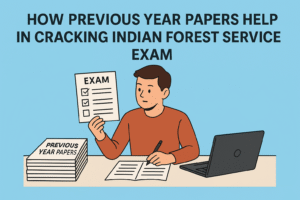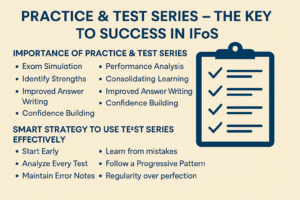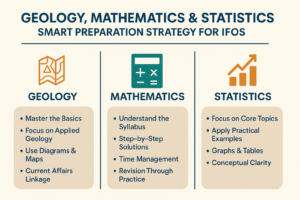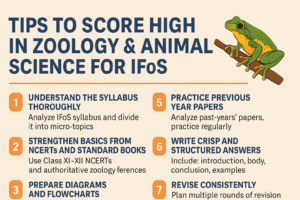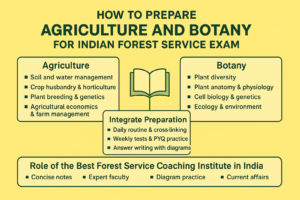The UPSC Civil Services Examination (CSE) is one of the most prestigious exams in India. The first stage, the Preliminary Examination (Prelims), serves as a qualifying test for the Mains. While the Prelims is objective in nature, it demands deep conceptual clarity, consistent revision, and smart preparation.
In this guide, we provide a complete breakdown of the UPSC Prelims syllabus, subject-wise insights, and effective strategies to cover the syllabus comprehensively.
UPSC Prelims Examination Overview
The UPSC Prelims consists of two papers conducted on the same day:
General Studies Paper I (GS I) – 200 marks
General Studies Paper II (CSAT) – 200 marks (Qualifying with 33% minimum)
Both papers are of 2 hours each.
Paper I decides the cut-off for qualifying to the Mains.
Paper II (CSAT) is only qualifying but cannot be ignored.
UPSC Prelims Syllabus in Detail
General Studies Paper I
1. Current Events of National and International Importance
Daily newspapers (The Hindu, Indian Express)
Monthly current affairs magazines (Yojana, Kurukshetra, PIB, etc.)
Focus: Government schemes, policies, international summits, reports
2. History of India and Indian National Movement
Ancient and Medieval India (culture, architecture, religion)
Modern India (freedom struggle, reform movements, leaders)
Sources: NCERTs, Spectrum’s Modern History
3. Indian and World Geography
Physical Geography (landforms, climate, resources)
Indian Geography (agriculture, industries, rivers, population)
World Geography (continents, trade, climatic regions)
Sources: NCERTs, G.C. Leong, Atlas study
4. Indian Polity and Governance
Constitution, Rights, Duties
Parliament, Judiciary, Executive, Panchayati Raj
Important Amendments, Supreme Court Judgments
Source: M. Laxmikanth’s Indian Polity
5. Economic and Social Development
Basic concepts: GDP, inflation, monetary policy
Government schemes (poverty, inclusion, health, education)
Sustainable Development Goals
Sources: NCERT Economics, Economic Survey, Budget highlights
6. Environment, Ecology, and Biodiversity
Ecosystems, climate change, biodiversity conservation
Environmental treaties and conventions
Pollution and mitigation efforts
Sources: NCERTs, Shankar IAS Environment book
7. General Science
Basic science from NCERT (Physics, Chemistry, Biology)
Latest developments in space, biotechnology, IT
Application-based questions
General Studies Paper II (CSAT)
1. Comprehension
Reading passages and answering based on context
2. Interpersonal Skills and Communication
Questions testing logical communication
3. Logical Reasoning and Analytical Ability
Puzzles, statements and conclusions, syllogisms
4. Decision Making and Problem Solving
Situational questions requiring judgment
5. General Mental Ability
Basic aptitude and problem-solving
6. Basic Numeracy and Data Interpretation
Class X level mathematics: percentages, ratios, averages, data charts
How to Cover the UPSC Prelims Syllabus Effectively
1. Build a Strong Foundation
Start with NCERTs (6th–12th standard) for History, Geography, Polity, Science, and Economics.
Create concise notes for quick revision.
2. Use Standard Reference Books
Spectrum’s Modern History
M. Laxmikanth for Polity
G.C. Leong for Geography
Shankar IAS for Environment
Economic Survey and Budget for Economy
3. Current Affairs Integration
Read newspapers daily for dynamic topics.
Use monthly compilations for revision.
Connect current affairs with static subjects (e.g., new space missions → Science & Tech + Geography).
4. Practice Mock Tests
Solve previous years’ question papers (last 10 years).
Attempt timed mock tests regularly.
Analyze mistakes and revise weak areas.
5. Focus on Revision
Multiple revisions are key to retention.
Maintain short notes and mind maps for quick recall.
6. CSAT Preparation Strategy
Practice comprehension passages daily.
Solve reasoning questions from standard guides.
Revise Class X level mathematics for numeracy questions.
Conclusion
The UPSC Prelims syllabus covers a vast range of topics, but with a structured strategy, it becomes manageable. Focus on building strong basics, integrating current affairs, practicing mock tests, and revising consistently. Remember, Prelims is not just about knowledge, but about accuracy, time management, and smart elimination techniques in multiple-choice questions.
FAQs on UPSC Prelims Syllabus
Q1. What are the two papers in UPSC Prelims?
A: General Studies Paper I and General Studies Paper II (CSAT).
Q2. Is CSAT qualifying?
A: Yes, candidates must score at least 33% in CSAT to qualify.
Q3. Which subject carries the highest weightage in Prelims?
A: Current Affairs, Polity, and History consistently carry significant weightage.
Q4. How should I prepare for Environment and Ecology?
A: Study NCERT Biology, Shankar IAS Environment book, and link current affairs with environmental topics.
Q5. How many months of current affairs should be covered for Prelims?
A: At least 12 months before the exam, though 18–24 months is safer for coverage.
Q6. Can Prelims be cleared in the first attempt?
A: Yes, with disciplined study, consistent revision, and practice of mock tests, many aspirants clear Prelims in their first attempt.
✅ SEO Keywords Included: UPSC Prelims syllabus, UPSC Prelims preparation, UPSC General Studies syllabus, CSAT syllabus, how to cover UPSC Prelims, IAS Prelims syllabus, UPSC Prelims subject-wise strategy.


